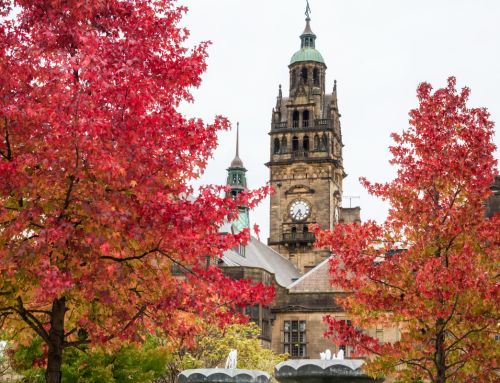The Thames is a major river flowing through southern England. It is the longest river entirely in England and the second-longest in the United Kingdom, stretching for approximately 215 miles (346 km) from its source in the Cotswolds to its mouth in the North Sea.
The Thames is the longest river that flows entirely in england but is the River Severn that is the longest in the entire United Kingdom.
The River Thames begins its journey in the Cotswold Hills in central England. Specifically, it originates at Thames Head in Gloucestershire, which is a small hamlet located about 5 miles (8 km) southwest of the town of Cirencester. The source of the Thames is a spring that emerges from the ground and feeds into a small stream that eventually becomes the River Thames.
The Thames flows through several major cities, including London, Oxford, and Reading, and is an important transportation and economic artery for the region. The river has been a vital part of English history and culture, serving as a source of inspiration for writers, artists, and musicians throughout the centuries.
The Thames is also a diverse ecosystem, supporting a wide variety of plant and animal life, including several species of fish, birds, and mammals. The river has been the subject of extensive conservation efforts in recent years to protect and preserve its natural habitats.
The mammals
There are several mammal species that live in and around the River Thames. Some of these include:
- Harbour seal (Phoca vitulina): Also known as the common seal, the harbour seal is a common sight in the Thames estuary.
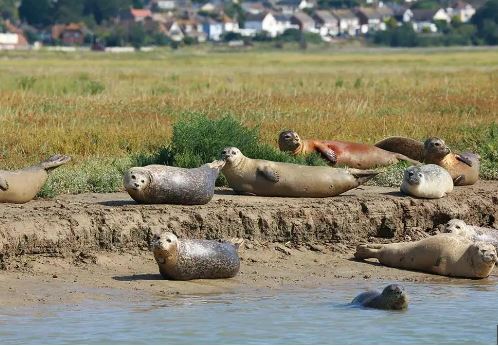
- Grey seal (Halichoerus grypus): The grey seal is another species of seal that can be found in the Thames estuary.
- Water vole (Arvicola amphibius): The water vole is a semi-aquatic rodent that is native to the UK and can be found along the banks of the Thames.
- Otter (Lutra lutra): Otters are also common in the Thames and can be seen swimming and hunting in the river.
- Common pipistrelle bat (Pipistrellus pipistrellus): The common pipistrelle bat is a small bat species that is found throughout the UK and is known to roost along the Thames.
- Brown rat (Rattus norvegicus): Although not native to the UK, the brown rat is a common mammal species that can be found along the banks of the Thames.
Fishes
There are many fish species that live in the River Thames. Here are some examples of fish species that are commonly found in the Thames:
- European eel (Anguilla anguilla): The European eel is a critically endangered species that is found in the Thames estuary.
- Atlantic salmon (Salmo salar): Although not as common as they once were, Atlantic salmon can still be found in the Thames.
- Roach (Rutilus rutilus): Roach are a common freshwater fish that can be found in all ofthe UK rivers.
- Bream (Abramis brama): Bream are a type of fish that uou can find in the United Kingdom rivers.
- Perch (Perca fluviatilis): Perch are a common freshwater fish that can be found in the Thames.
- Pike (Esox lucius): Pike are a predatory freshwater fish
- Chub (Squalius cephalus): Chub are a common freshwater fish
These are just a few examples of the fish species that can be found in the River Thames. There are many other species of fish that call the Thames their home, including several non-native species that have been introduced to the river.
Birds
These are bird species that can be found along the river. Here are some examples of bird species that are commonly found in the Thames area:
- Mallard (Anas platyrhynchos): The mallard is a common duck species that can be found along the Thames and other UK waterways.
- Grey heron (Ardea cinerea): The grey heron is a wading bird that is commonly found along the banks of the Thames.
- Kingfisher (Alcedo atthis): The kingfisher is a small, brightly colored bird that can be seen darting along the Thames, hunting for fish.

- Common tern (Sterna hirundo): The common tern is a seabird that can be found along the London River estuary.
- Cormorant (Phalacrocorax carbo): Cormorants are large, diving birds that can be seen along the Thames, especially near areas with high fish populations.
- Black-headed gull (Chroicocephalus ridibundus): The black-headed gull is a common bird species that can be seen along the Thames and other UK waterways.
- Great crested grebe (Podiceps cristatus): The great crested grebe is a diving bird that can be found along all the UK rivers.
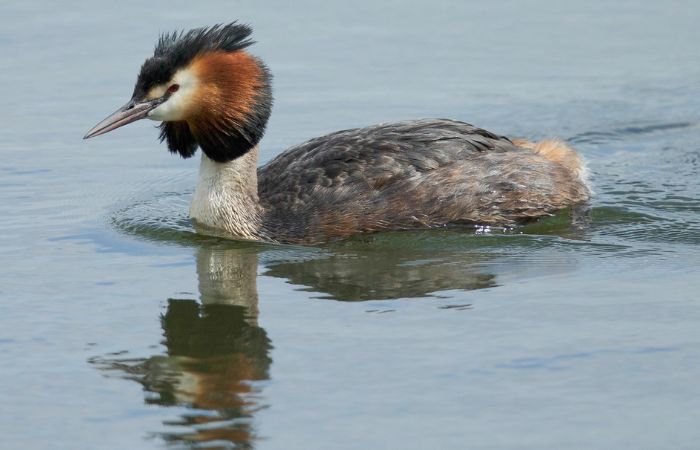
There are many other bird species that call the Thames their home, including several species of waterfowl, wading birds, and birds of prey.
The Thames as economic tool
Overall, the Thames is a significant and iconic feature of the English landscape, both as a natural resource and as a cultural landmark.
The Thames has had a significant impact on the economy of London throughout history. In the story, the Thames likely played a crucial role in the growth and development of London as a major trading and economic center.
As a major river, the Thames provided a vital transportation route for goods and people, allowing ships to navigate inland and transport goods to and from London. This made London a natural hub for commerce and trade, facilitating the growth of industries such as shipping, fishing, and manufacturing.
In addition to transportation, the Thames also provided a source of power for the city. The river was used to power mills, which were important for industries such as textiles and paper production.
Overall, the Thames played a key role in London’s economy, serving as a vital transportation route and source of power for centuries. Even today, the river continues to be an important part of London’s economy, supporting industries such as shipping, tourism, and recreation.
The bridges along the Thames
There are many bridges that cross over the River Thames in London, but the exact number can vary depending on how one defines a bridge. Below are a few different ways to count the bridges:
- Greater London Authority (GLA) definition: According to the GLA, there are 34 bridges that cross the River Thames within the administrative boundary of Greater London.
- Tidal Thames definition: If we include all the bridges that cross the River Thames between its source in Gloucestershire and the Thames Estuary, there are over 200 bridges. However, many of these are small pedestrian bridges or railway bridges that are not accessible to the public.
- Foot and road bridges: Another way to count the bridges is to separate them into footbridges and road bridges. By this definition, there are 25 road bridges and 5 footbridges that cross the Thames within Greater London.
Some of the most famous bridges that cross the River Thames in London include Tower Bridge, London Bridge, and Westminster Bridge.
- Tower Bridge: Tower Bridge is an iconic landmark in London and is one of the most recognizable bridges in the world. It was built in 1894 and is a bascule and suspension bridge, meaning it has two towers and can open in the middle to allow large ships to pass through. Tower Bridge is located near the Tower of London and is a popular tourist attraction.
- London Bridge: London Bridge is a historic bridge that has been rebuilt several times over the centuries. The current bridge was built in 1973 and is a simple concrete structure. Although it is not as visually impressive as some of the other bridges on the Thames, it is an important transportation artery and a symbol of London’s history and resilience.
- Westminster Bridge: Westminster Bridge is a beautiful green bridge that was completed in 1862. It is a suspension bridge with gothic-style towers that provide stunning views of the Houses of Parliament, Big Ben, and the London Eye. The bridge is also known for its bright green paint, which was chosen to match the seats in the House of Commons.

- Blackfriars Bridge: Blackfriars Bridge is a railway and pedestrian bridge that was built in 1869. It was recently renovated and now has a distinctive solar panel roof that generates energy for the station below. The bridge offers stunning views of St. Paul’s Cathedral and the City of London.
- Millennium Bridge: The Millennium Bridge is a modern pedestrian bridge that was opened in 2000. It is a suspension bridge with a distinctive wobbling motion that caused it to close temporarily after it first opened. The bridge is located between St. Paul’s Cathedral and the Tate Modern museum and is a popular spot for tourists and locals alike.

The most famous attraction along the Thames
There are many famous attractions located along the River Thames in London. Here are some of the most well-known ones:
- The Tower of London: The Tower of London is a historic castle and fortress that was built in the 11th century. It is located on the north bank of the Thames near Tower Bridge and is famous for its Crown Jewels and its role in British history.
- The Houses of Parliament: The Houses of Parliament, also known as the Palace of Westminster, is a stunning gothic-style building that houses the UK Parliament. It is located on the north bank of the Thames near Westminster Bridge and is a popular tourist attraction.
- The London Eye: The London Eye is a giant Ferris wheel that is located on the south bank of the Thames. It offers stunning views of the city and is one of the most popular tourist attractions in London.
- St. Paul’s Cathedral: St. Paul’s Cathedral is a beautiful cathedral that was built in the 17th century. It is located on the north bank of the Thames near Millennium Bridge and is known for its stunning dome and intricate mosaics.
- The Tate Modern: The Tate Modern is a modern art museum that is located on the south bank of the Thames. It is housed in a former power station and features a wide range of contemporary art from around the world.
- The Globe Theatre: The Globe Theatre is a reconstruction of the original theatre where Shakespeare’s plays were performed in the 16th and 17th centuries. It is located on the south bank of the Thames and offers performances of Shakespeare’s plays throughout the year.
- The National Theatre: The National Theatre is a major theatre complex that is located on the south bank of the Thames near Waterloo Bridge. It features a wide range of productions, from classic plays to modern dramas, and is a popular destination for theatre lovers.
These are just a few examples of the many famous attractions that can be found along the River Thames in London. Other notable landmarks include the London Bridge, the Millennium Bridge, the Cutty Sark, the Royal Observatory, and the O2 Arena.
Living on houseboats along the thames
Living on houseboats along the Thames is a unique way of life that has become increasingly popular in recent years. Houseboats are boats that have been converted into homes and are moored along the river. Here are some aspects of living on houseboats along the Thames:
- Community: Living on a houseboat creates a strong sense of community, as neighbors are in close proximity and often help each other out. Many houseboat communities along the Thames have formed their own associations and organize events such as barbecues, parties, and river cleanups.
- Cost: Houseboats can be a more affordable way of living in London, as the cost of buying or renting a houseboat is generally lower than that of a traditional house or apartment. However, mooring fees and other costs associated with living on a houseboat can vary depending on the location.
- Lifestyle: Living on a houseboat offers a unique lifestyle that is closely connected to the river. Houseboat residents often spend time fishing, kayaking, and enjoying other water activities. Some houseboats have gardens and even rooftop decks, offering a chance to enjoy the outdoors in the heart of the city.
- Challenges: Living on a houseboat can come with some challenges, such as the need to regularly maintain the boat, deal with water and sewage systems, and navigate through the sometimes harsh weather conditions on the river. However, many houseboat residents enjoy the challenge of living on the water and find it to be a rewarding and fulfilling experience.
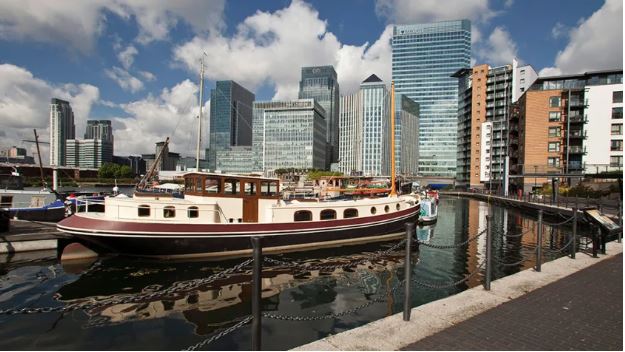
Overall, living on a houseboat along the river can be a unique and rewarding way of life for those who enjoy being close to the water and value a strong sense of community.
Here are some facts and curiosities about the River Thames:
- The name “Thames” comes from the Celtic word “Tamesas”, which means “dark water”.
- The River Thames flows through several major cities in the UK, including London, Oxford, and Windsor.
- The Thames Barrier is a massive flood control structure that was built in the 1970s to prevent the flooding of London. It is made up of ten steel gates that can be raised to block the river during high tides and storm surges.
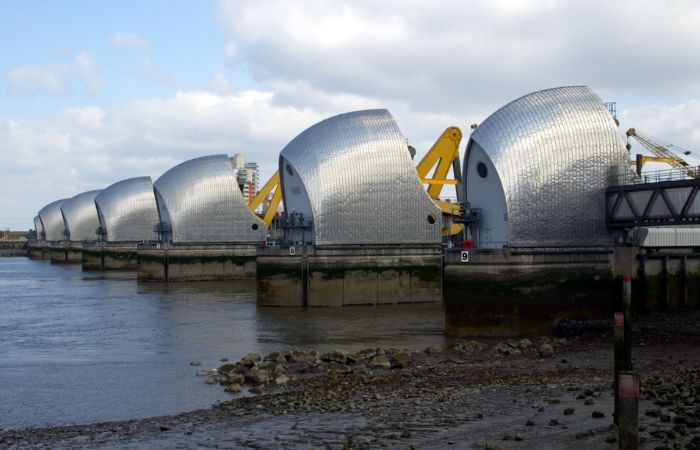
- The River Thames has played an important role in the history and economy of London, serving as a major trade route since ancient times.
- Is home to a wide variety of wildlife, including otters, seals, and many species of fish and birds.
- Sometimes called “The Liquid History” because of its important role in British history, including the coronation of kings and queens and the transportation of goods during the Industrial Revolution.
- The River Thames has been featured in many works of literature, including Charles Dickens’ “Oliver Twist” and Kenneth Grahame’s “The Wind in the Willows.”
- The Oxford and Cambridge boat race, one of the most famous rowing races in the world, takes place on the river every year.
The River Thames in literature
The River Thames has been featured in a wide range of literature over the years. Here are some notable examples:
- “Three Men in a Boat” by Jerome K. Jerome: This humorous novel, published in 1889, tells the story of three friends who take a boating holiday. The book is a classic of English literature and has inspired many people to explore the river for themselves.
- “Oliver Twist” by Charles Dickens: One of Dickens’ most famous works, “Oliver Twist” features several scenes set along the Thames, including the famous scene where Bill Sikes meets his end on the rooftops overlooking the river.
- “The Wind in the Willows” by Kenneth Grahame: This beloved children’s book, published in 1908, tells the story of a group of animals who live along the banks of the Thames. The book is set in the fictional town of “River Bank” and is a celebration of the river and its wildlife.
- “Heart of Darkness” by Joseph Conrad: This classic novella, published in 1899, tells the story of a journey up the Congo River, but it begins with a scene set on the Thames. The book is a powerful exploration of colonialism and its impact on Africa.
- “Mrs. Dalloway” by Virginia Woolf: This modernist novel, published in 1925, features several scenes set along the river, including a famous sequence where the main character, Clarissa Dalloway, walks along the river and reflects on her life.
- “Great Expectations” by Charles Dickens: This classic novel, published in 1861, features several scenes set along the Thames, including the famous scene where Pip helps Magwitch escape from the law by rowing him down the river.
These are just a few examples of the many works of literature that have been inspired by the River Thames. The river has played an important role in British culture for centuries and continues to be a source of inspiration for writers and artists today.
The River Thames fetured in movies
The River Thames has been featured in many movies over the years, both as a backdrop and as a central element of the story. Here are some notable examples:
- “The Long Good Friday” (1980): This classic British crime movie features several scenes set on the Thames, including a dramatic chase sequence that takes place on a boat.
- “Harry Potter and the Order of Phoenix” (2007): In this installment of the Harry Potter series, Harry and his friends take a trip down on a boat as part of a secret mission.
- “Sherlock Holmes: A Game of Shadows” (2011): In this action-packed sequel, Sherlock Holmes and his sidekick Watson chase their arch-nemesis Moriarty down the Thames in a thrilling boat chase.
- “The World Is Not Enough” (1999): This James Bond movie features a memorable action sequence set on the river, in which Bond pursues his enemy in a high-speed boat chase.
- “The Boat That Rocked” (2009): This British comedy is set on a pirate radio station that broadcasts from a ship anchored on the Thames. The movie features several scenes set on the river and pays tribute to the role of pirate radio in British culture.
- “Spectre” (2015): In this James Bond movie, the river features in a dramatic boat chase sequence that culminates in a spectacular explosion.
These are just a few examples of the many movies that have featured the river over the years. The river’s iconic bridges, landmarks and waterscapes have made it a popular location for film-makers from all over the world.




